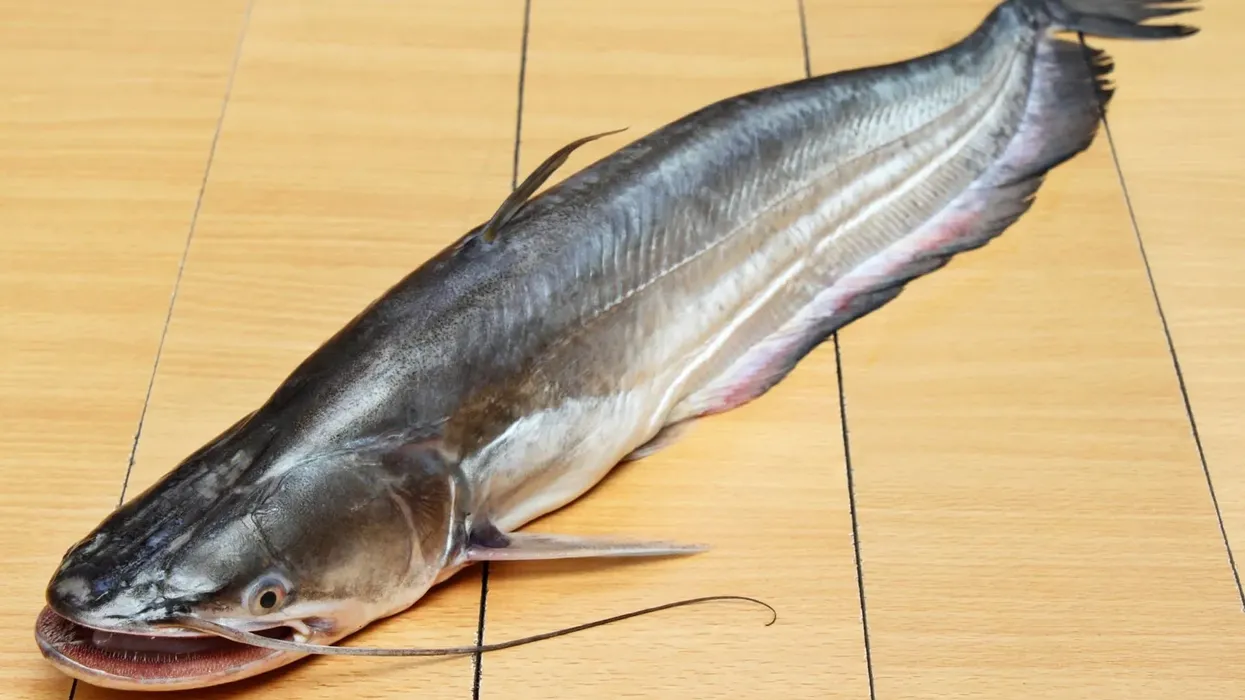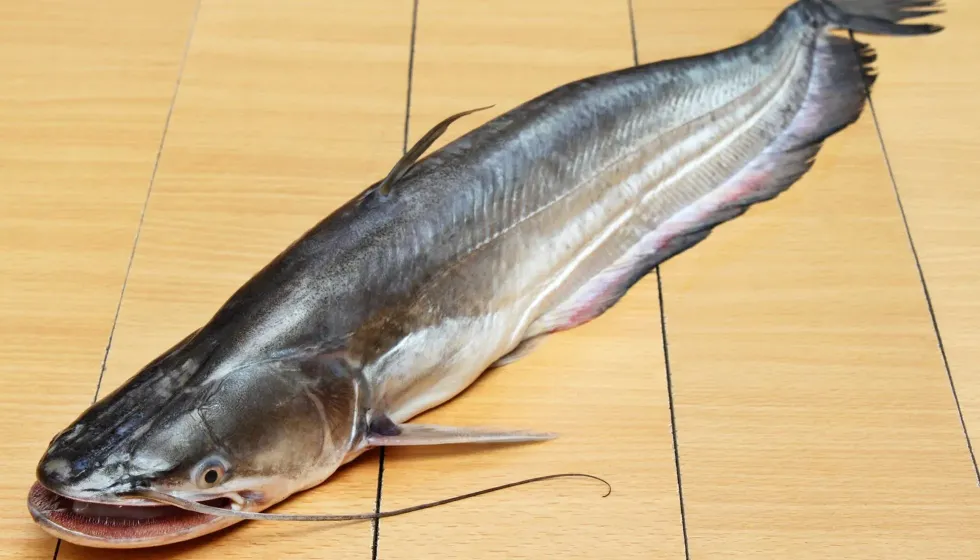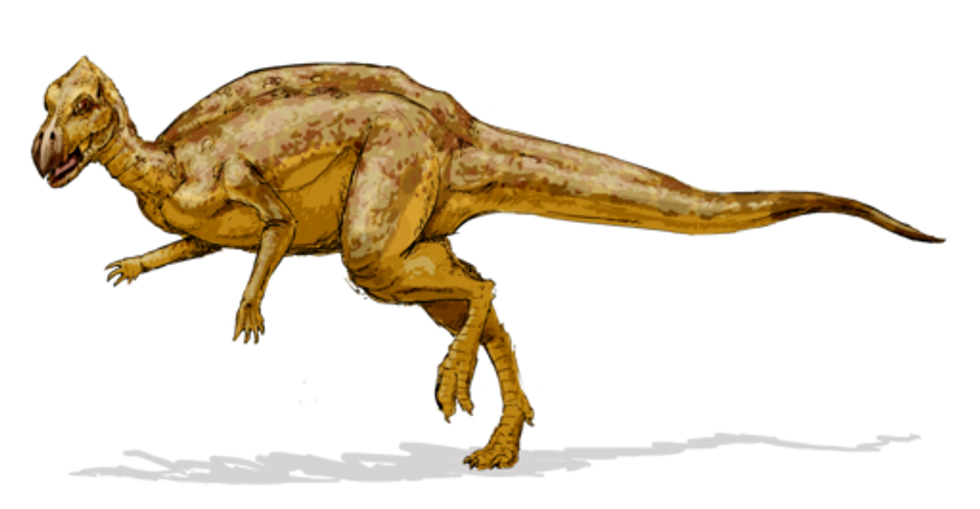Fish have great market value in today's society and the Wallago attu or commonly known as the helicopter catfish, boal or borali fish is a great new addition to the ornamental markets of fisheries. These genus species are commonly found in freshwater bodies and are found in South and Southeast Asia.
It is known by different names in different regions but is notoriously famous for its predatory instincts and carnivorous diet.
The fish is grayish or yellowish-gray in color with a mix of white in the belly region. It can be found in large rivers, lakes, canals, reservoirs, and still or slow-flowing water bodies as it has a tidal influence on its living habits.
Under the current circumstances of the world where pollution has degraded the environment, the species is quite vulnerable and has been seen degrading in numbers.
If you enjoy reading about the Wallago attu, then check out other articles on Ghost Knifefish and Bigmouth Buffalo Fish.
Wallago Attu Interesting Facts
What type of animal is a Wallago attu?
The Wallago attu belongs to the family of Siluridae and is one of the many types of catfish.
What class of animal does a Wallago attu belong to?
This species belongs to the class Actinopterygii, that is, it's a ray-finned fish.
How many Wallago attu are there in the world?
It is not possible to know the exact amount, but the number has surely declined due to over-exploitation and pollution.
Where does a Wallago attu live?
The Wallago attu distribution can be found in South and Southeast Asia predominantly. These species can be found in South Asia - Pakistan, India, Bhutan, Nepal, Bangladesh, Sri Lanka, Afghanistan, Iran, and Myanmar. It is also found in Southeast Asia- Myanmar, Thailand, Indonesia, Cambodia, and Vietnam.
What is a Wallago attu's habitat?
These fish species are found in deep water bodies, still, or slow-flowing, and generally freshwater bodies like rivers, streams, canals, reservoirs, jheels, and other tidal-influenced water bodies. The helicopter catfish or Wallago attu habitat needs to be fast-flowing as well as stagnant which is deep and shallow.
Who does Wallago attu live with?
These species are voracious predators and therefore stay alone as they tend to consume any animal they can fit in their mouth. They tend to stay deep underwater in search of prey.
How long does a Wallago attu live?
The Wallago attu life span is for almost 10 years, which is almost 124 months.
How do they reproduce?
As these species can be found in shallow freshwater, they tend to lay eggs in both bound and open-water reservoirs. The rainy season is the perfect period for them to give birth to the new species and July-August is when they lay eggs.
What is their conservation status?
According to the IUCN Red List, the helicopter catfish is a Vulnerable species due to the over-consumption of this breed and pesticides which causes water bodies to be polluted and the ecosystem to degrade.
Wallago Attu Fun Facts
What does a Wallago attu look like?
The helicopter catfish is a predator species and looks like the part. It has an elongated body but is laterally flat. The total length of these fish can vary from 7-9 in (20-25 cm) and the weight of the Wallago attu range is from 99-110 lb (45-50 kg).
These species have small eyes and a gaping mouth that goes up beyond the eyes with conical teeth that enable them to grasp onto food better.
It has two fleshy filaments that grow from the mouth known as the barbel which is of two types- the maxillary barbels on the upper jaw are the longest and the mandibular barbels on the lower jaw are the shortest.
It has a dorsal fin that is shorter in size and the anal fin is deeply forked but longer than the pelvic fin.
The pectoral spine of this fish is weak which makes it difficult for them to keep track of their direction.

How cute are they?
The fish at first glance looks like a real-life Disney cartoon but once it opens its mouth and the vomerine teeth are visible, you will be pretty much scared to go near these species.
How do they communicate?
To communicate, fish like these first arch their bodies and communicate, or they can even feel the vibrations in the water using their anal fin.
How big is a Wallago attu?
The Wallago attu size can vary from 7-9 in (20-25 cm) and a Black Ghost knife fish is 19-20 in (48-50 cm) maximum, which makes the helicopter catfish almost 12 inches shorter, that is, it's almost two times smaller than a black ghost knife fish.
How fast can a Wallago attu swim?
These fish are not very fast swimmers as they tend to stay in muddy, deep, and silty bottoms of freshwater bodies and are found in large rivers, lakes, and reservoirs. Also due to a weak pectoral spine, these fish can't swim fast enough as they lose direction.
How much does a Wallago attu weigh?
These species can weigh up to 99-110 lb (45-50 kg) depending on the size and age of the fish.
What are the male and female names of the species?
There is no certain difference in the names for the different sexes and are commonly known as the helicopter catfish or boal fish.
What would you call a baby Wallago attu?
The babies of these species are called fingerlings, which means smaller fish or new species.
What do they eat?
The Wallago attu diet consists of carnivorous food as it is a predator. The adults feed on smaller fishes, mollusks, crustaceans like red rock crabs, insects, and also smaller animals like freshwater butterflyfish. The fingerlings mostly eat smaller fishes and insects.
Are they aggressive?
This species is aggressive and cormorant. They don't shy away from attacking and can bite down anything that they can fit in their mouth.
Would they make a good pet?
Absolutely not. These fish species are predators and can harm humans as well.
Did you know...
It is quite difficult to search for these fish and catching them is another huge task. The perfect bait for them is squids as slowly fishermen draw the helicopter catfish out using them and catch them with stronger hook lines.
Why is it called helicopter catfish?
The reason behind the name is unknown, but the catfish originates due to the barbels of the fish which makes it look cat-like.
Can we eat Wallago fish?
These species have been commercially harvested over the years due to the benefits it provides upon consumption. It provides essential nutrients and has polyunsaturated fatty acids which help humans to keep their hearts healthy. There have been recent findings that suspect otherwise as consumption of this fish has led to some infections and allergies.
Here at Kidadl, we have carefully created lots of interesting family-friendly animal facts for everyone to discover! Learn more about some other fishes including angel shark facts, or spotted sunfish fun facts pages.
You can even occupy yourself at home by coloring in one of our free printable Wallago attu coloring pages.










